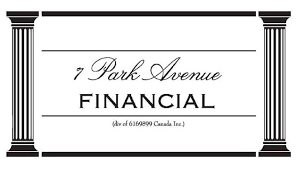|
Revolutionize Your Finances with Receivable Factoring
Navigate Cash Flow Challenges with Accounts Receivable Factoring Solutions
YOU WANT INFORMATION ON WHAT ARE THE BEST FACTORING PROGRAMS FOR YOUR FIRM – FACTORING QUESTIONS ANSWERED AND EXPLAINED!
Unlock Cash Flow Now: The Power of Factoring Receivables & Receivables Funding
You've arrived at the right address! Welcome to 7 Park Avenue Financial
ARE YOU UNAWARE OR DISSATISFIED WITH YOUR CURRENT BUSINESS FINANCING OPTIONS?
CALL NOW - DIRECT LINE - 416 319 5769 - Let's talk or arrange a meeting to discuss your needs
Or Email us with any question on Canadian Business Financing
EMAIL - sprokop@7parkavenuefinancial.com

Discover how factoring receivables can revolutionize your cash flow, because immediate access to capital is key to business growth
Factoring Receivables: The Secret Weapon for Business Growth
Introduction: Understanding Factoring in Business Finance
We forgive you, and we are sure everyone else does also... for what...? Simply because you keep asking about the best factoring program out there and quite frankly you have factoring questions on this ‘relatively’ newer form of business financing.
So, factoring explained. Let's cover some key basics and arm you with data to make an informed decision as to whether his type of Canadian business finance works for you.
Step 1: Understanding the Concept
Understanding what we are talking about. It couldn’t be more simple. As you generate sales and receivables you enter into a 'program' to sell those receivables to a third party. As can be imagined, you receive a discounted price for your receivables, because you are getting cash today for something that would normally be collected 1, 2, and three months out.
The Cost and Pricing of Factoring
The cost of factoring is always a key discussion point with our clients. The industry refers to this as a 'discount fee', and in Canada, that fee is quite frankly all over the place.
We can make a general statement though that typically the fee is in the 1- 2% range. We can hear our clients already. "We’ll take the 1% please!". The reality is that you do have some control over the pricing in your factoring program because the key drivers of the pricing are quite simple - the size of your A/R portfolio, the number of customers, where they are located, and their overall credit quality.
Focus Beyond Pricing: How Factoring Affects Your Business
While customers tend to always focus on price in this discussion we frankly tell clients that the factoring questions they should be focusing on are more important - how does the program work on a day-to-day basis and how does it affect my clients and my business processes?
Daily Operations and Benefits of Factoring
On a day-to-day basis, you are advanced, as you generate invoices, approximately 90% of the invoice value - generally the same day you cut the invoice.
Why only 90%. Simply because the finance firm holds back that 10 % as a reserve or buffer and it also covers off the financing cost. Let’s demonstrate a clear example. If you generated an invoice today for $100.00 you would receive via wire transfer 90$ into your bank account today. If your customer paid in 30 days (you wish!) and the factoring firm priced your program at 2% then when your customer paid the invoice you would receive your other 8 dollars back, the 2$ being the finance charge. It's as simple as that.
Immediate Benefits of Factoring
It's not hard for our clients to see some of the immediate benefits - all of a sudden ' factoring explained ' requests become quite clear - it frees up cash flow instantly for general working capital purposes, suppliers can be paid on time, and you can purchase additional products and services that you need to grow your business on a daily basis. Companies choosing CONFIDENTIAL A/R FINANCING can bill and collect their own invoices and retain all the cash flow benefits.
Factoring vs. Traditional Banking
Factoring, aka 'receivable discounting' is different from banking - it comes at a higher cost and works on a day-to-day basis significantly different than if you were able to facilitate a bank line of operating credit. The harsh reality is that while many banks are pushing back on receivable and inventory facilities for small and medium businesses the factoring industry has kicked into hyper-growth mode, seizing the opportunity to finance the liquidity gap in Canadian business.
Factoring as a Strategic Tool for Market Expansion:
Often overlooked is the potential of factoring receivables to facilitate international trade and market expansion. Businesses typically view factoring as a solution for immediate cash flow problems.
However, it can also be a strategic tool for entering new markets. When expanding into regions with longer payment cycles or higher risks, factoring can provide the necessary liquidity and risk mitigation. This approach allows businesses to explore international opportunities without the immediate pressure of maintaining cash flow, as the factoring company assumes the risk associated with the foreign accounts receivable.
Leveraging Factoring for Supplier Negotiation Power:
An unconventional but practical application of factoring is using the immediate cash flow it provides to negotiate better terms with suppliers.
Businesses often focus on the direct impact of factoring on their finances but overlook the leverage it provides in supply chain negotiations. With cash on hand from factoring, a business can negotiate discounts for early payments or bulk purchases with suppliers, which can ultimately lead to cost savings that exceed the cost of factoring. This approach turns factoring into a tool for improving overall supply chain efficiency and cost-effectiveness, rather than just a method for managing receivables.
Factoring as a Catalyst for Organizational Change and Efficiency:
Factoring can also be viewed as a catalyst for driving internal organizational improvements. When a company engages in factoring, it necessitates a thorough examination of its accounts receivables and credit policies.
This process often highlights inefficiencies or issues within the organization's credit management and invoicing processes. By addressing these issues to make the business more attractive to factoring companies (who prefer well-managed receivables), a business can inadvertently improve its internal systems and processes. This perspective views factoring not just as a financial tool, but as a prompt for broader organizational efficiency and effectiveness in managing customer relationships and credit.
Key Takeaways
-
Factoring is a financial transaction where a business sells its accounts receivable (invoices) to a third party (called a factor) at a discount. This is done to obtain immediate cash flow instead of waiting for the payment terms of 30, 60, or 90 days when the customer pays. That is why accounts receivable factoring works!
-
Cost and Pricing of Factoring: The cost of factoring, often referred to as a 'discount fee', varies, but it typically ranges between 1-2% in Canada. Factor fees are influenced by factors like the size of the accounts receivable portfolio, the number of customers, their geographic location, and their credit quality.
-
Immediate Cash Flow: A Factoring transaction provides immediate cash flow to businesses. Typically, an advance rate of 90% of the value of the invoice is advanced immediately after the invoice is generated, which helps businesses manage their working capital more effectively when the factoring company pays the invoice on receipt.
-
Impact on Business Operations: Factoring affects day-to-day business operations. Businesses get immediate cash which can be used for operational expenses, paying suppliers on time, and investing in growth. However, it also means losing a percentage of the invoice value and potentially altering the way clients perceive the business’s financial stability.
-
Comparison with Traditional Banking: Factoring is distinct from traditional banking lines of credit. It's generally more expensive but accessible to businesses that might not qualify for traditional bank loans, especially small and medium-sized enterprises. It operates on a daily basis and fills the liquidity gap that banks often leave, particularly in the case of receivables and inventory financing.
Conclusion:
Speak to a trusted, credible and experienced Canadian business financing advisor who will guide you through the process for success in Canada's newest mainstream business financing strategy and on factoring questions raised by Canadian businesses. "Maximize your business potential with receivables factoring, turning outstanding payments into a valuable asset."
FAQ
What is factoring in receivables and how does accounts receivable factoring work?
Factoring receivables involves selling your outstanding unpaid invoices to a third-party accounts receivable factoring company at a discount for immediate cash.
How does factoring improve cash flow?
By factoring, you get immediate cash for invoices, enhancing your working capital without waiting for payment terms.
Is factoring expensive?
Factoring costs vary in a factoring agreement, typically ranging from 1-2%, depending on factors like invoice volume and customer creditworthiness.
Can factoring help small businesses?
Absolutely, factoring/accounts receivable financing is an accounts receivable monetization tool especially beneficial for small businesses needing quick cash who can't meet the qualifications for traditional loans.
A/R Financing can also improve manual accounts receivable processes in a business via online submission for funding. All businesses with commercial or government clients can finance their a/r and benefit from these cash flow solutions and receivables management and working capital optimization strategies for needs in trade finance services.
Large corporations also employ receivables securitization strategies for cash flow acceleration.
Does factoring affect business relationships?
It can, as customers pay the factor directly. Transparency about the process can help maintain positive relationships. Companies can also opt for non recourse factoring, where the factoring company accepts and takes responsibility for collection, allowing the company to achieve credit risk mitigation via the transfer of credit risk to the factoring company.
In normal recourse factoring the company still has the collection and bad debt risk.
What are the risks associated with factoring?
Factoring can impact customer relationships and involves costs that might reduce overall profit margins. Business owners can easily calculate ar factoring based on asset turnover and days sales outstanding.
Can I choose which invoices to factor?
Yes, many factoring companies allow businesses to select specific invoices or customers for factoring and a cash advance.
How quickly can I receive funds through factoring?
Funds via receivable financing are typically received often the same day or within 24-48 hours after the invoices are verified and approved by the factor.
Is personal credit history important in factoring?
Factoring and invoice discounting primarily focus on the creditworthiness of your customers rather than your personal or business credit history.
Can factoring help in tax management?
Debt Factoring can aid in managing cash flow for tax purposes, but it doesn’t directly affect tax liabilities or calculations.

' Canadian Business Financing With The Intelligent Use Of Experience '
STAN PROKOP
7 Park Avenue Financial/Copyright/2025

Stan Prokop is the founder of 7 Park Avenue Financial and a recognized expert on Canadian Business Financing. Since 2004 Stan has helped hundreds of small, medium and large organizations achieve the financing they need to survive and grow. He has decades of credit and lending experience working for firms such as Hewlett Packard / Cable & Wireless / Ashland Oil
|